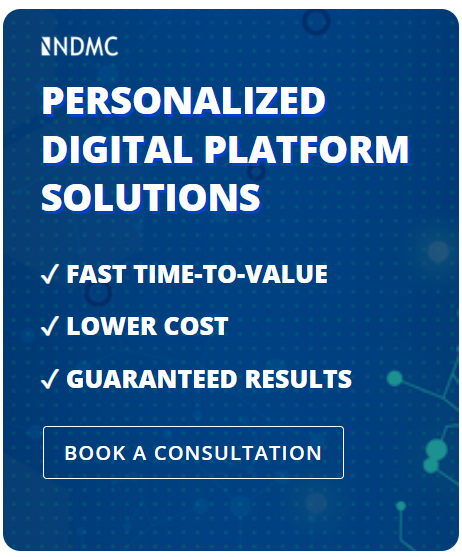How to avoid data spaghetti
By Ian Tomlin Nov 23, 2022 at 11:29 am
Most businesses today operate more than 80 SaaS apps, the consequence being ‘data sense’ is harder. How do firms bridge across silos to tame their data spaghetti?
The Joy of SaaS
When the possibility of Software as a Service (SaaS) solutions arrived to the market—heralded in by the evolution of web platforms and cloud computing—they were game-changing for innovators in the tech industry. Suddenly, developers could bring their products to market faster (and lower their costs), focus on really niche solutions, offer subscription-based products, and give customers the opportunity to try them out immediately. Furthermore, technical support and endorsements could be supplied through the same website that sold the products.
For buyers, SaaS was equally advantageous. No longer did they need to commit to a purchase before experiencing a product to see if it delivered value. The quality of products leaped up the scale, as providers HAD to deliver excellent quality, intuitive, and responsive applications.
It very much felt like a seed change in the software industry.
The New Balance of Power in Enterprise IT
Enterprise computing practitioners were somewhat less thrilled by SaaS. Before its arrival, the role of the Enterprise CTO was unquestioned. They were the gods of technology, and nobody could get anything done in IT without their blessing.
The idea that departmental managers could arrive at the IT desk and start demanding software products they hadn’t even seen before, and show them immediate advantages was hard to counter, and left many IT heads on the back foot, trying to defend the common sense of requiring testing, integration and further validation before any recommendation was adopted.
The rise of SaaS adoption levels in the enterprise has soared over two decades, as department heads have got ever more involved in selection decisions on the tools they, and their teams, want to use. The power to make decisions drifted from the center of the enterprise to the margins.
Few could argue that the quality of applications used in business has benefited from SaaS. But at what cost?
Data Spaghetti
Software-as-a-Service technology has played its part in making it close to impossible for real-time business decisioning to happen across the enterprise without an additional layer of ‘business intelligence and analytics’ technology being superimposed.
Even with the best data visualization and analytical tools, the problem of fragmented data silos pervades.
It’s not simply the case that SaaS tools separate usage activity into different places across the enterprise computing biosphere, using a myriad of separately authored apps results in every app using its own core data tables for common things that every organization needs to know about—such as people, departments, organizational hierarchies, policies, processes, suppliers and user groups. While some of these building blocks can be inherited from common directories, most are simply individually reproduced time and again by vendors.
Personalized digital platform solutions
✓ fast time-to-value
✓ lower cost
✓ guaranteed results

The Problem of Data Reuse
Growing demand from department leaders and executives for new apps and real-time data analytics has created a demand for data reuse. And it’s when these requests emerge that the problems of data integrity and quality emerge.
Install any new digital innovation into an enterprise, and it’s almost inevitable that existing data will want to be harnessed. When this happens, time and again, one finds that the original data tables operating within SaaS applications are incomplete, unused, or irrelevant. Business Analysts find themselves scratching their heads trying to work out which bits of data to string together to build a reliable picture of the operating reality.
The State of the Art is a Right State
That’s where the state-of-the-art is today:
- Enterprise IT leaders wondering if they will see the day when no department manager comes to the door demanding the next new SaaS thing, just because ‘they like the color and the wife just bought one for her company.’
- The very same department managers being given a subscription to Microsoft Power BI forcing them to spend time away from their customers and teams to clumsily play with rubbish data, wondering ‘Why do I have to spend half my life trying to find data, rather than having the chance to use it?’
- CXO executives still struggling to know what processes, policies, and customers actually exist.
- Businesses want to be ‘digital’ but lack the quality and integrity of data to innovate.
It begs the question: Is there a better way? The answer is yes—and it’s been around for a while.
Applications Fabrics—Enterprise Tech to Tame Enterprise Spaghetti
The concept of Applications Fabrics has been buzzing around for over a decade, but it’s only recently, with the advent of No-Code tools that executive teams are taking them seriously.
An Application Fabric is a form of Enterprise Platform-as-a-Service (PaaS); an environment for designing, deploying and operating tens—if not hundreds—of apps and software robots. It means that the Business Analysts of Digital teams (not coders) author applications as they work in consort with business stakeholders in what Gartner calls ‘fusion teams.’ Applications requirements go straight from the workshop whiteboard into a live wireframe that swiftly becomes a new application.
What makes Application Fabrics different to what comes before is that at least 60% of the things you need to reply an Enterprise App (i.e., integration, security, common core tables, user identity directories, login forms, user experience designs shaped to brand guidelines, etc.) come out of the box. It means the only things business Analysts need to get right are the drag and drop rules, if then logic and workflows of the application they are building that are unique to the requirement.
While No-Code applications development is fast, building apps on a No-Code Application Fabric is even faster.
What’s awkward about Application Fabrics is that you only need one of them. This means it takes the IT power balance back from the outer fringes of the enterprise to the center. That’s an awkward conversation in today’s boardrooms, but it’s arguably a necessary one. Organizations that want to harness data, become data-driven, keep data safe, eradicate self-authored apps and spreadsheets, achieve excellence in customer experience, serve up the best applications for their stakeholders, and cut costs—well, history tells us that the best way to achieve it is to have a unified computing and data environment.
Personalized digital platform solutions
✓ fast time-to-value
✓ lower cost
✓ guaranteed results

Related posts

Crisis or Opportunity?
GO WHERE THE BUSINESS IS: The economic impact of COVID-19 is here to stay, but that’s not a terrible thing, for many...

What Is Customer Data Management?
Customer Data Management is the discipline of managing the value of customer data.

Powering curiosity—the data to make decisions
Every business needs data to drive decisions, but how do leaders create an information system able to keep up with their changing objectives?

